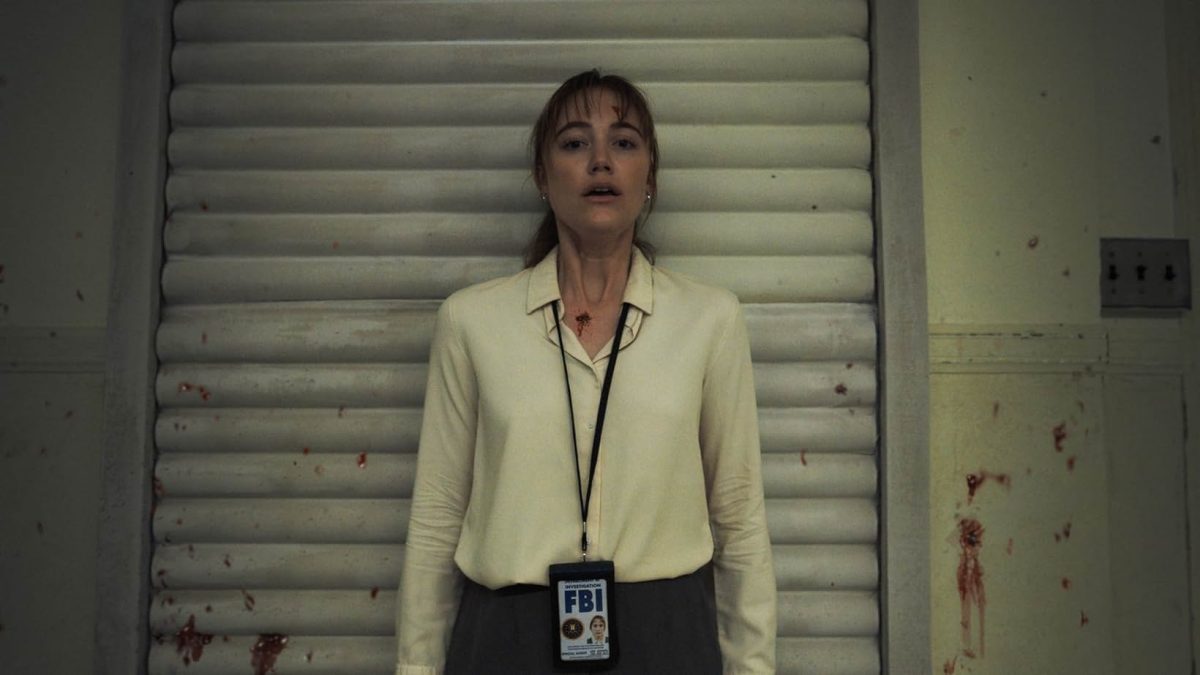Thirty years ago today, Pink Floyd released “The Division Bell.”
Since its debut, the album has produced an international tour, the band’s first and only Grammy and a comfortable spot in their top five best-selling records.
Nine years earlier, Pink Floyd’s situation indicated little of that success.
Founding member and bassist Roger Waters had just left the group, bitterly citing creative differences for his departure. Without Waters’ distinctive lyrical talent and conceptual creativity — the driving force behind some of Pink Floyd’s most influential records including “The Dark Side of the Moon,” “Wish You Were Here” and “The Wall” — the band’s time together became vulnerable to an unceremonious conclusion.
That is until guitarist and vocalist David Gilmour positioned himself at the helm of Pink Floyd’s sinking ship. Pulling the previously dismissed keyboardist Richard Wright back on board and dodging the legal tantrums of a furious Waters, the band forged on to release their next album, “A Momentary Lapse of Reason,” in 1987.
Get The Daily Illini in your inbox!
After tumbling over a Waters-shaped hurdle and regaining their footing on the triumph of “A Momentary Lapse of Reason,” Pink Floyd ran across the finish line with “The Division Bell” seven years later. It would also be their final record to consist entirely of new material.
The first track, “Cluster One,” begins the album in quintessential Floydian fashion as a purely instrumental song. The initial few seconds meet the listener with absolute silence until a foreign crackling noise presents itself — later revealed by Andy Jackson, one of the album’s recording engineers, to be the sound of electromagnetic noise from solar wind.
From there, Gilmour’s electric guitar and Wright’s piano converse over drummer Nick Mason’s steady percussion, underlined by an ethereal combination of synthesizer and Hammond organ.
As the song progresses, the players sound surer of themselves. They immerse the listener into a thematic experience akin to clarity after waking up from a disorienting dream.
“What Do You Want from Me” quickens the album’s pace with an angsty take on a one-sided audience-artist relationship.
Gilmour repeats the question in the song’s title by way of frustrated pleas, singing over a gritty introduction reminiscent of “Wish You Were Here”’s “Have a Cigar” and backed by the urgent vocals of Carol Kenyon, Durga McBroom, Jackie Sheridan and Rebecca Leigh-White.
He starts to build the album’s broader narrative on communication, and a lack thereof estranges the song’s protagonist from the audience in front of them.
While “What Do You Want From Me” shouts into an unresponsive void, “Poles Apart” speaks to a past vividly framed by nostalgia and regret.
Mentions of “the golden boy” and “Hey You,” a song from “The Wall” album, imply references to former band members Syd Barrett and Waters.
As Tim Renwick’s consistent acoustic strums fade into the sounds of seagulls and waves, “Poles Apart” seamlessly transitions into the Grammy-winning “Marooned,” a heroic five-and-a-half-minute testimony to Gilmour’s prowess on the electric guitar.
Fittingly winning the award for Best Rock Instrumental Performance, “Marooned” is one of many instrumental highlights generously scattered throughout “The Division Bell.”
“A Great Day for Freedom” follows the lyrical silence of “Marooned” with poignant commentary on the fall of the Berlin Wall in 1989. Gilmour meditates on the disappointing reality of false hope and the soberingly slow pace of change.
“I sort of wish and live in hope, but I tend to think that history moves at a much slower pace than we think it does,” Gilmour said about the song in a Guitar World interview. “I feel that real change takes a long, long time.”
“Wearing the Inside Out” develops one of the lushest instrumental and vocal landscapes on the album.
Dick Parry, part of previous Pink Floyd hits like “Us and Them” and “Shine On You Crazy Diamond,” makes an unforgettable opening with the tenor saxophone. He goes on to linger throughout the song, flitting in and about Gilmour’s reliably transcendent strings.
The track also sees Richard Wright uncharacteristically step up to the role of lead vocal alongside Gilmour. Regardless, his understated, sober delivery fits the song’s grim yet inspiring scene.
The song follows its protagonist as they slowly but surely break free from their long-lived isolation, producing some of the rawest themes and striking imagery on the album.
As Wright confesses his mental and physical numbness amidst an “endless stream of garbage” and “a sea of random images,” modern listeners may draw parallels to the unending information overload of the current internet age that was at its genesis when “The Division Bell” came out.
“Take It Back” touches on the fleeting nature of relationships. In line with the rest of the album’s communication-challenged characters, the narrator tries everything but an honest conversation to protect themselves from the pain of losing the person they love.
“So I spy on her, I lie to her/ I make promises I cannot keep,” Gilmour sings.
The track’s melodies and instrumentals match its subject material in that it is one of the more forgettable parts of the album. This is unhelped by its eerie resemblance to “I Still Haven’t Found What I’m Looking For” and other U2 hits that preceded it, an offense unfit for a band with the proven creative caliber of Pink Floyd.
While “Coming Back to Life” similarly suffers from archetypal lyricism detailing a one-sided relationship, Gilmour saves its unremarkable thematic elements with another dynamic performance on the guitar.
Bolstered by passionate background vocals and in reckoning with the isolating challenges of communication, “Keep Talking” appears to be a sister song of “What Do You Want From Me.”
In the end, the track argues for hope through excerpts from a Stephen Hawking commercial that had moved Gilmour to near tears, distinguishing itself from its cynical complement.
“It doesn’t have to be like this/ All we need to do is make sure we keep talking,” Hawking’s computer recites.
While Hawking’s delivery may fall flat in an ordinary setting, the spacious and resounding instrumentals of “Keep Talking” give his message a new life.
In “Lost for Words,” Gilmour works on mending the flawed mindset of the song’s past, and subsequently, his relationships.
However, the track does not forget “The Division Bell’s” commitment to the realities of communication, no matter how undesirable. This otherwise serious endeavor is broken up with a rare instance of humor, though.
“So I open my door to my enemies/ And I ask could we wipe the slate clean/ But they tell me to please go fuck myself/ You know you just can’t win,” Gilmour matter-of-factly recounts in the last verse.
The album culminates with “High Hopes,” the undeniable pinnacle of its tracklist.
It would be hard to envision the song without the contributions of Polly Samson, a novelist, journalist, co-writer on seven of the album’s 11 tracks and Gilmour’s current wife.
Samson played a crucial role in patching up the lyrical hole Roger Waters had left in Pink Floyd, aiding Gilmour’s unfamiliar endeavor into writing at the forefront of the band.
“But whatever David was thinking at the time, she helped him find a way to say it,” Bob Ezrin, producer on the album and who initially resented Samson’s substantial involvement, would later say.
As a result, the track is achingly beautiful. Gilmour labeled it “autobiographical,” as the song winds through melancholic reflections on his youth and the early days of Pink Floyd.
The lyrics in the chorus are relatively simple, paraphrasing the adage, “the grass is greener on the other side,” yet the weighted yearning in Gilmour’s delivery leaves a lasting impression regardless.
Chimes ring throughout the song, a hint at the album title’s reference to the division bell, an alarm that calls members of the United Kingdom’s Parliament to a vote in the House of Commons.
“High Hopes’” closing is an event in itself, composed of a two-minute guitar solo by Gilmour. He utilizes a lap steel variation of the instrument, allowing the notes to glide through the song in seemingly boundless proportions.
The last seconds of the solo ripple into the outro, which turns silent except for a final refrain of bells.
The track ends with a muffled phone call between the band’s manager, Steve O’Rourke, and Gilmour’s stepson, Charlie. Charlie abruptly hangs up on O’Rourke, cementing the album’s final ode to its theme of communication.
If the artistry of “High Hopes” and the songs before it demonstrate anything, it is that “The Division Bell” ultimately does not suffer from the context defining it.
“There will always be people who feel that Pink Floyd finished when Roger left, just as there are people who feel Pink Floyd ended when Syd Barrett left,” said drummer Nick Mason in a 1994 interview with Pink Floyd & Co.
While some fans point to the Waters-led projects like “The Dark Side of the Moon” and their comparative commercial success, remaining bandmates Gilmour, Wright and Mason may direct your attention to what matters to them.
“The reason why bands stay together is because the sum is greater than the parts,” Gilmour said. “As long as all the members of the band feel that they can achieve more together than they can on their own, there is a purpose to the band remaining together.”
If anything, the shaky circumstances that led to the album enhance its message. Decades from its inception, “The Division Bell” continues to provide an antidote to past regrets, all while strengthening Pink Floyd’s legendary status as a group that aims to create, as Gilmour put it in 1994, “simply magic.”













